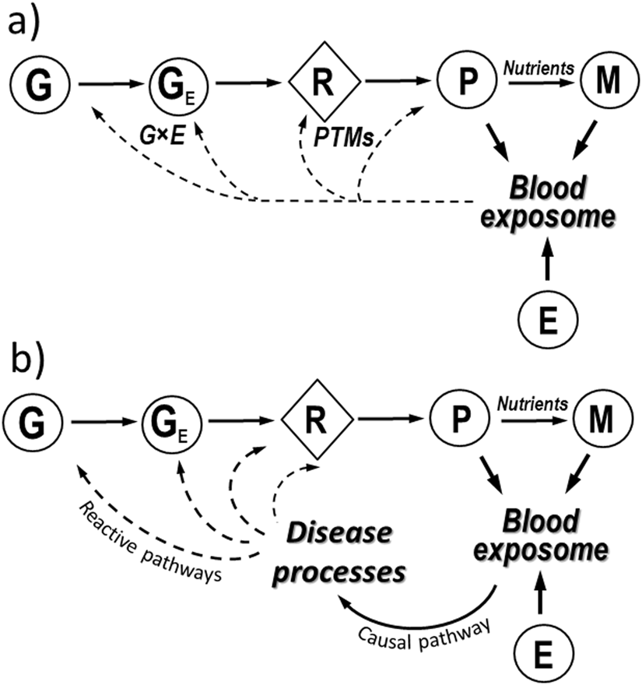npj Systems Biology and Applications ( IF 4 ) Pub Date : 2018-09-01 , DOI: 10.1038/s41540-018-0065-0 Stephen M. Rappaport

|
Etiological studies of human exposures to environmental factors typically rely on low-throughput methods that target only a few hundred chemicals or mixtures. In this Perspectives article, I outline how environmental exposure can be defined by the blood exposome—the totality of chemicals circulating in blood. The blood exposome consists of chemicals derived from both endogenous and exogenous sources. Endogenous chemicals are represented by the human proteome and metabolome, which establish homeostatic networks of functional molecules. Exogenous chemicals arise from diet, vitamins, drugs, pathogens, microbiota, pollution, and lifestyle factors, and can be measured in blood as subsets of the proteome, metabolome, metals, macromolecular adducts, and foreign DNA and RNA. To conduct ‘exposome-wide association studies’, blood samples should be obtained prospectively from subjects—preferably at critical stages of life—and then analyzed in incident disease cases and matched controls to find discriminating exposures. Results from recent metabolomic investigations of archived blood illustrate our ability to discover potentially causal exposures with current technologies.
中文翻译:

重新定义环境暴露的疾病病因
对人类暴露于环境因素的病因学研究通常依赖于仅针对数百种化学药品或混合物的低通量方法。在这篇“观点”文章中,我概述了如何通过血液暴露(血液中循环的化学物质总量)来定义环境暴露。血液暴露小体由来源于内源性和外源性的化学物质组成。内源性化学物质以人类蛋白质组和代谢组为代表,它们建立了功能分子的稳态网络。外源性化学物质来自饮食,维生素,药物,病原体,微生物群,污染和生活方式因素,可以在血液中作为蛋白质组,代谢组,金属,大分子加合物以及外源DNA和RNA的子集进行测量。进行“全暴露关联研究”,应当从受试者中(最好是在生命的关键阶段)前瞻性地获取血液样本,然后在突发疾病病例和相匹配的对照中进行分析,以发现有区别的暴露。最近对归档血液进行代谢组学研究的结果表明,我们能够利用当前技术发现潜在的因果接触。


























 京公网安备 11010802027423号
京公网安备 11010802027423号